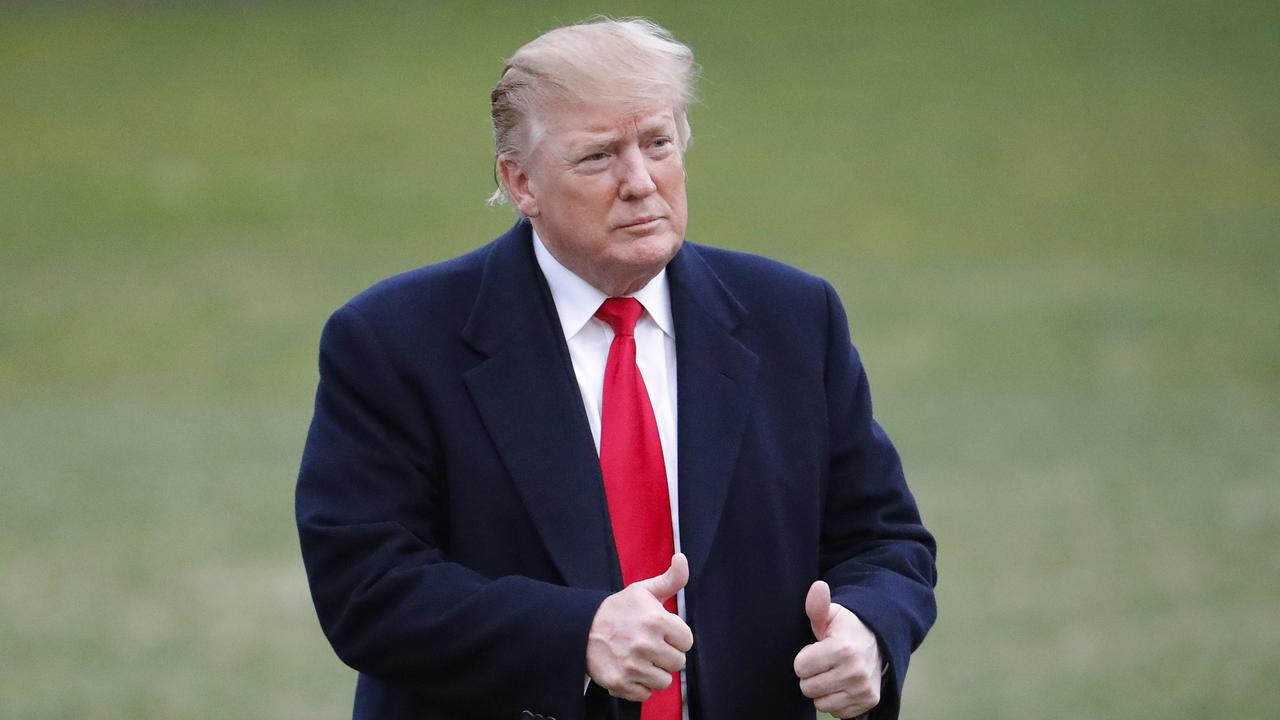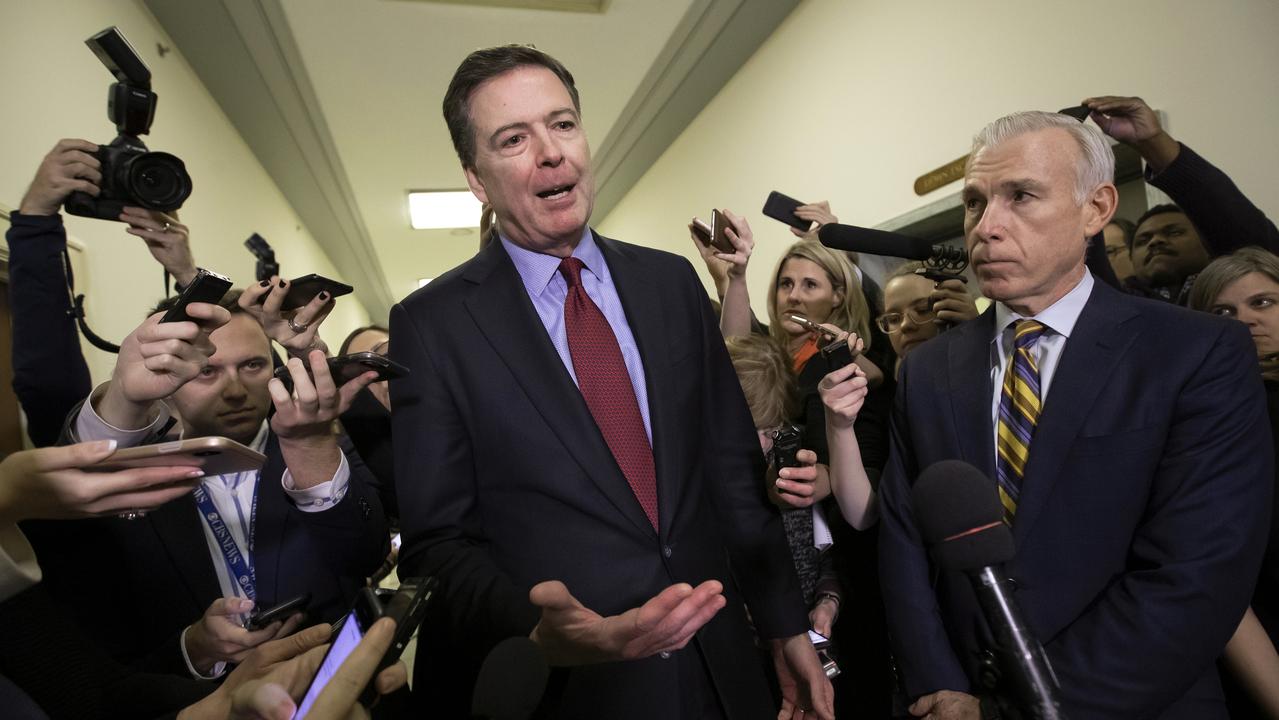
During the surge in Iraq, I worked closely with the 4th Brigade Combat Team (Airborne) of the US Army’s 25th Infantry Division (4/25 IBCT) in a hot and dangerous triangle on Baghdad’s southern outskirts.
Tough and competent, the brigade’s paratroopers were far from home. Based in Anchorage, Alaska, 600km from the Arctic Circle, 4/25 is the US’s only airborne formation in the Pacific theatre. It specialises in rapid deployment for extreme cold-weather and mountain warfare in North Asia and the Arctic.
Naturally enough, Washington politicians periodically question the need for a parachute brigade in Alaska, and move to cut it.
When this happened early last year, 4/25 staged a huge airdrop, taking members of congress for an orientation flight in a C-17 cargo plane. Pointing to the tundra scrolling beneath the massive aircraft, as the paratroopers jumped with their heavy equipment, one officer shouted to a staffer next to him: “What does this remind you of? … That’s right — Korea.”
Later, a commander began his briefing: “The mission of this brigade is to fight tonight in Korea.”
A year ago, that statement seemed hyperbolic. Today, not so much.
Last week Pyongyang tested its second intercontinental ballistic missile, demonstrating major improvements over its first launch in early July. Analysts believe the missile can now reach US bases in Japan and on the island of Guam, as well as Alaska, Hawaii and — for the first time — the “lower 48” US mainland states. Hawaii’s emergency management agency instituted civil defence drills last weekend. Mainland cities such as Los Angeles, Denver and Chicago are now potentially in range of a North Korean missile.
Combined with advances in Pyongyang’s nuclear program, these developments have forced intelligence agencies to revise earlier estimates: analysts now project North Korea will be able to hold the US mainland, including the east coast, under threat of a nuclear missile strike within the next year. Besides contradicting President Donald Trump’s assertion on Twitter in January that a North Korean ICBM “won’t happen!” this represents a step-change in the threat of conflict on the Korean Peninsula.
The immediate military response was a joint overflight across Korea in which Japanese F-2 and South Korean F-15 fighters escorted US Air Force B-1 bombers in a demonstration of military capability and alliance unity. Unfortunately, there was somewhat less political unity in Washington.
Secretary of State Rex Tillerson issued a measured statement, with Defence Secretary James Mattis and Director of National Intelligence Dan Coats, in which the three leaders emphasised Washington’s goal of “denuclearisation” of the peninsula and their resolve to defend South Korea and Japan.
Tillerson later said regime change was not a US objective, and Washington remains ready to talk to Pyongyang, but his comments ran counter to those of CIA director Mike Pompeo and Vice-President Mike Pence, both of whom argue the regime’s drive to threaten the US and its allies with nuclear-tipped missiles is unacceptable and say that all options — including regime change — remain on the table.
Trump’s reaction was to criticise Beijing while also taking a swipe at previous US administrations. In a string of Twitter messages, he said he was “very disappointed with China. Our foolish past leaders have allowed them to make hundreds of billions of dollars a year in trade, yet ... they do NOTHING for us with North Korea, just talk … We will no longer allow this to continue. China could easily solve this problem!”.
Chinese news agency Xinhua derided the President’s tweets as “emotional venting”, claiming in an editorial that scapegoating China showed limited understanding of the reasons behind Pyongyang’s provocations and of China’s relationship with North Korea. It’s worth exploring both issues as context for what is now clearly an increased risk of conflict — nuclear or conventional, deliberate or (more likely) through miscalculation — in Korea.
The key question, as implied by Xinhua, is motivation: why would Pyongyang, weak as it is, engage in such risky behaviour? Why would it continually walk right to the edge of catastrophic conflict, while alienating its only ally, China?
Analysts who study North Korea full-time tend to see its brinkmanship as driven by mutually reinforcing factors of internal insecurity and external vulnerability. In this reading of the situation, it’s Pyongyang’s very weakness that makes it act so aggressively.
North Korea is one of the poorest countries in the world. Its GDP of just $US1700 per person last year puts it below Afghanistan, Mali, Yemen or Haiti, and on a par with Zimbabwe and South Sudan. Its 25 million people have experienced repeated cycles of famine and economic crisis, exacerbated by regime repression and mismanagement. North Korean leaders rightly fear societal collapse above all, and keeping people focused on external enemies, through manufactured crises and confrontations, has become a tool to manage internal unrest. Dreams of national greatness (say, holding Washington, Tokyo and Seoul to ransom through nuclear weapons) help unify North Korea’s people while distracting them from day-to-day privations.
Maintaining an image of Korea beset by huge and hateful enemies ready to crush the country at any sign of disunity helps convince ordinary people to back the regime, whatever their misgivings. At the elite level, Kim Jong-un has been compelled by his need to consolidate control over the military and state apparatus he inherited from his father to execute or exile many potential rivals, while also making it extremely dangerous for him to back down from confrontation lest he appear weak to his inner circle.
Externally, North Korea confronts an adverse military balance of power that it lacks the capacity to handle with conventional (that is, non-nuclear) means. Since the Korean War armistice of 1953, North Korea has progressively fallen behind its southern neighbour in prosperity, technology, health and education, and consequently in military capability. Though Soviet support helped it keep pace somewhat until the end of the Cold War, since then North Korea’s conventional forces have become obsolescent.
By contrast, South Korea fields large and advanced military forces and the US maintains a permanent garrison of 28,500 there, including land, air and naval forces and, since 2015, heavy armoured brigades that rotate through the country on a nine-month cycle. Offshore, US naval forces maintain considerable air, maritime and expeditionary marine capabilities, able to respond quickly in a crisis. All this would put North Korea’s increasingly antiquated military behind the curve in a conventional confrontation.
Pyongyang has responded by increasing spending on its military, which now numbers about 1.1 million troops and soaks up 25 per cent of its meagre GDP. North Korean forces are bigger than those of the South (in sheer numbers, the north has the fourth largest military on the planet) but they mainly field outdated Warsaw Pact equipment, and their tactics are antiquated. Still, in some specialised areas, such as artillery, with more than 8000 heavy and medium guns, special operations forces numbering more than 200,000 and trained to launch fanatically aggressive (often suicidal) raids, and chemical weapons including 2500 to 5000 tonnes of Sarin and VX nerve agent, they could inflict huge damage.
The threat is exacerbated by strategic geography: nearly half of South Korea’s population lives within 80km of North Korea.
South Korea’s capital and largest city, Seoul, with an official size of 10.29 million but a metropolitan area population of almost 26 million, lies almost entirely within artillery and rocket range of the border. The north has concentrated thousands of heavy guns, rockets, and short and medium-range ballistic missiles, many dug into hillsides, camouflaged in buildings or hidden in tunnels, to inflict massive damage on Seoul in the first hours of a conflict. Recent estimates suggest as many as 30,000 South Korean dead in the first strike as up to 500,000 artillery shells and rockets strike the capital in the first two hours.
Adding chemical and nuclear weapons into the mix (the north is thought to have 15 to 20 nuclear bombs along with extensive chemical stockpiles) would dramatically increase the toll. Thus, while the south and its allies would almost certainly eventually defeat North Korea, Seoul — including South Korea’s commercial hub, much of its industry, one of its two largest ports, its seat of government, and roughly the same population as all of North Korea — could be obliterated in the first hours of a war.
Further afield, North Korea’s combination of improved missile technology and an enhanced nuclear arsenal would give it the ability to strike the airfields, ports and deployment bases (in Japan, South Korea or US territories in the Pacific) that would be needed to mount an invasion of the north or sustain a protracted defence of the south, especially given the devastation inflicted on Seoul at the start of a conflict. For Pyongyang, this gives nuclear weapons an operational role (increasing devastation on Seoul and interdicting moves against the north) in addition to the classic function of strategic deterrence.
The regime sees nuclear weapons, in this strategic sense, as a key to survival, a way of preventing what happened to fellow “axis of evil” member Saddam Hussein, or to Muammar Gaddafi (who gave up his nuclear program, only to be overthrown and lynched by rebel forces supported by US and NATO air strikes). The nuclear program wards off the possibility of forced regime change, and compels global powers to take North Korea seriously, while giving Pyongyang something to trade.

While there seems little likelihood, at this point, of the regime ever giving up its nuclear weapons, it could conceivably suspend missile development or go slow on miniaturisation of ICBM warheads in return for aid or the lifting of sanctions.
Apart from the fact that these concessions would lack credibility (similar statements have proved hollow at least three times over the past two decades), the problem is that these twin roles for the north’s nuclear weapons — as tactical assets to inflict maximum damage on day one of a war, and as longer-term strategic tools of deterrence and regime survival — both drive Pyongyang to increasingly aggressive provocations.
Waving the nuclear sword to cover for internal weakness and external vulnerability is fraught with the possibility of miscalculation.
Worse, Pyongyang’s posturing may convince the north’s adversaries — principally the US — that since the costs of conflict will only rise over time, and North Korea’s capability to inflict harm will only grow, the smart choice (however unpalatable) is to go to war earlier rather than later.
US leaders have repeatedly said the North Korean regime is too unstable and unpredictable for them to tolerate its possession of nuclear missiles capable of targeting the US, a sentiment reiterated by several military and civilian leaders this week.
Such a conflict, even if ultimately victorious, would be an unmitigated disaster for South Korea, and only slightly less so for Japan. Previous US administrations have been wary of exposing these allies to such risks, and this has had a restraining effect on US policy.
Mattis has described any conflict as likely to be “tragic on an unbelievable scale” and US Army chief of staff General Mark Milley has described any potential war as “highly deadly and horrific”.
But that restraint may no longer be operative, now that the continental US itself is under direct threat.
The more robust language from Washington has been echoed by practical steps in Seoul, where South Korean President Moon Jae-in has resumed deployment of Terminal High Altitude Area Defence systems that had been under review due to Chinese and Russian opposition, and is pushing for South Korea to build increasingly powerful ballistic missiles of its own, capable of striking anywhere in North Korea and also reaching China.
Even without such missiles, China would suffer hugely in the event of war: there would be massive refugee flows into Chinese territory; the possibility of nuclear fallout or conventional weapons use against its citizens or on its territory; huge instability on its frontier; and a political vacuum that might bring South Korean, US or even Japanese troops right up to the Chinese border. China’s attitude to North Korea is fundamentally informed by the need to prevent such a conflict while managing its ally’s increasingly provocative actions.
Formally, Chinese relations with North Korea are governed by the Sino-North Korean Mutual Aid and Co-operation Friendship Treaty of July 1961. This includes a defence clause, Article 2, that commits each party to “immediately render military and other assistance by all means at its disposal” if either is subjected to armed attack by any state or states.
Despite the treaty’s language, it is by no means certain that China would join a conflict provoked or started by the North Korean regime, and Chinese officials have previously pressured Pyongyang to revise the treaty’s defence commitments ahead of its next renewal in 2021. They have also shown irritation at North Korea’s sabre-rattling, and concern over the regime’s instability.
At the same time, however, the collapse of North Korea would be at least as damaging to China as a war on the peninsula, since it would trigger similarly massive refugee flows into China, inflict huge economic damage and, not least, potentially result in a unified, pro-Western Korea on China’s border. This makes China more likely to intervene in a defensive conflict, or to step forward into North Korea to prevent regime collapse, or to stabilise the country in the aftermath of a war.
All this would be far better avoided, of course, and in February, China announced a ban on coal imports from North Korea, aimed at pressuring the regime to limit its ICBM and nuclear program. In the months since then, it has stood up its forces along the North Korean border to a higher state of readiness, conducted military exercises, and held a series of drills to test its preparedness to handle either a conflict or an influx in refugees.
At the same time, however, overall Chinese trade with North Korea has expanded significantly this year, and Beijing continues to defend the regime at the UN while quietly pressuring it behind the scenes.
Trump’s pique notwithstanding, China does not control North Korea, and its ability to force Pyongyang to rein in its nuclear ambitions is limited — though, clearly, Beijing has more leverage than any other external player.
Australia would probably not be directly involved in an initial exchange of fire on the Korean Peninsula, but as a major US ally and close trading and security partner with Japan, we would almost certainly be drawn into a conflict over time. The ANZUS treaty would almost certainly be invoked in the event of a North Korean attack on the US, or on US forces in South Korea and Japan. More broadly, Pyongyang recently threatened that Australian statements in support of US efforts to rein in its weapons programs were “a suicidal act” that would bring Australia “within range of a nuclear strike”.
While technically true (Australian territory will eventually be in range of Korean nuclear weapons once the ICBM program reaches full capacity) it’s hard to imagine Pyongyang using one of its limited stock of weapons so far afield.
The effects of a conflict on Australia would be dire, but largely second-order: destruction of trading and economic relationships; potential radioactive contamination of the atmosphere and ocean; and — perhaps most onerous — the need to participate in a coalition combat campaign, or a post-conflict reconstruction or counter-insurgency effort.
Those at immediate risk, for now, are the civilian population of Seoul, and the South Korean and US troops deployed on the peninsula.
During the Cold War, US forces in Korea were sometimes described as a “trip-wire” — preventing North Korea from restarting a conflict by ensuring any attack on the south would immediately bring in the US.
But given North Korea’s continuing provocations, the forward deployment of US armoured brigades on rotation into South Korea, increased readiness for war on all sides, and the possibility of miscalculation by unstable and fractious governments, today these forces look less like a preventive deterrent and more like frontline troops positioned for the opening rounds of a potentially devastating conflict.
In Alaska, commanders and staff at the 4/25 IBCT must indeed be thinking hard about the possibility that they may have to “fight, tonight, in Korea”.





To join the conversation, please log in. Don't have an account? Register
Join the conversation, you are commenting as Logout